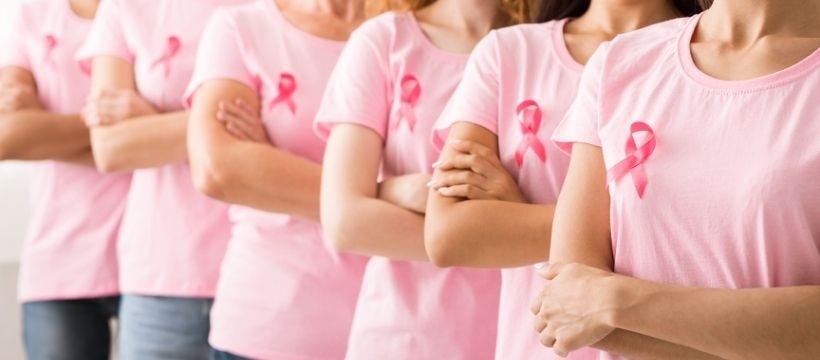Know Your Normal - The Importance of Self-Exams
Early detection starts with knowing your own body
Insights for Empowerment
My mother faced breast cancer in her 40s and survived. She had her left breast removed, and even though she did not talk about it much, her fight shaped me in ways I did not fully understand until I faced my own diagnosis.
She came from a generation where women carried their pain quietly. They protected their families by being strong, even if it meant holding their fears close. After losing her own mother at just 13 years old, my mother did not have an example to follow or a woman to guide her through something as life-changing as breast cancer. She had to figure it out with the strength she knew how to use: survival. I’m fortunate enough to have her with me through this fight and for that I’m grateful.
She did not share the medical details with us, and years later some of those details have faded from memory. But now I realize something important. Silence is not weakness. For her, it was strength. It was her way of holding her family together. She carried what she could, and she did the best she knew.
Growing up, I did not know my full family history. I did not understand my risk, the signs to look for, or the questions I should have been asking. But I do not stand here pointing to what was missing. I honor the foundation that was given to me. My mother survived so I could stand here today and help other women live.
We do not know what we do not know. And sometimes what we do not know can cost us. That is why I choose to speak. Awareness is not criticism. It is love in action. It is legacy. It is protection.
I talk about early detection because it saved my life. I caught my cancer early. Even without a complete family history, I paid attention to my body. I ask questions now. I advocate now. I teach now. Not to reopen wounds, but to build bridges for the next generation.
I want my granddaughters and every woman reading this to have what so many women before us did not have: information, courage, community, hope.
My mother fought in silence. I choose to fight out loud.
Why Self-Exams Matter
Mammograms are critical, but they’re not the only tool. Many women discover breast cancer themselves through self-exams or by noticing changes in their breasts.
Knowing what’s normal for YOUR body means you’ll recognize when something changes.
How to Do a Breast Self-Exam
In the shower: Use the pads of your fingers to move around your entire breast in a circular pattern, from the outside to the center. Check both breasts and the area up to your collarbone and armpit.
In front of a mirror: Look for any changes in size, shape, or contour. Raise your arms and look again. Look for any skin dimpling, redness, or nipple changes.
Lying down: Place a pillow under your right shoulder and your right arm behind your head. Use your left hand to check your right breast using the same circular motion. Repeat on the other side.
What to Look For
Don’t just check for lumps. Look for:
Changes in breast size or shape
Skin dimpling or puckering
Nipple discharge (especially if bloody)
Nipple inversion or changes
Redness or scaliness
Persistent pain in one area
Swelling or thickening
When to See a Doctor
If you notice ANY changes that persist for more than a few weeks, see your doctor. Don’t wait. Don’t convince yourself it’s nothing. Trust your instincts.
Most breast changes aren’t cancer. But the only way to know is to get it checked.
Conclusion
Early detection saved my life. Knowing your body, doing regular self-exams, and getting your annual mammograms can save yours too.
Don’t put it off. Your life is worth the five minutes it takes to check.
Encouraging Nuggets
Scripture for Today: “I praise you because I am fearfully and wonderfully made.” – Psalm 139:14
Action Steps:
Do a self-exam tonight
Set a monthly reminder on your phone
Schedule your mammogram if you’re overdue
Teach your daughters to know their bodies


